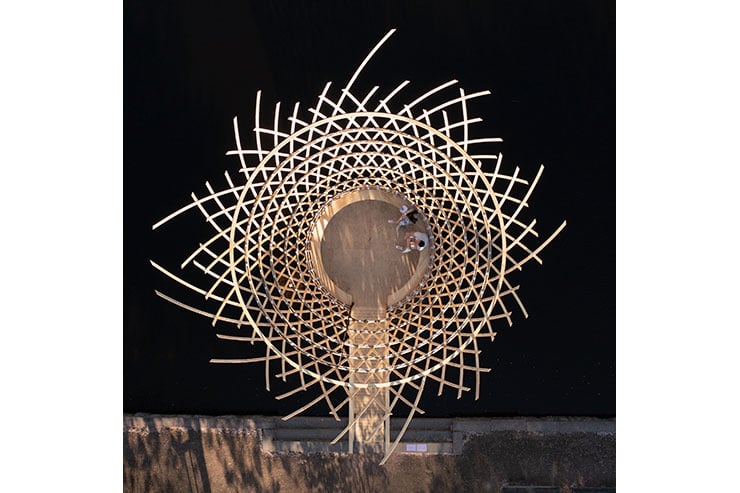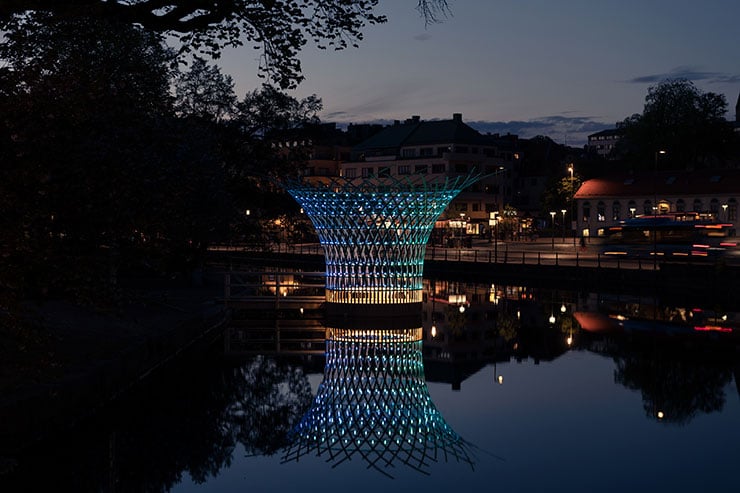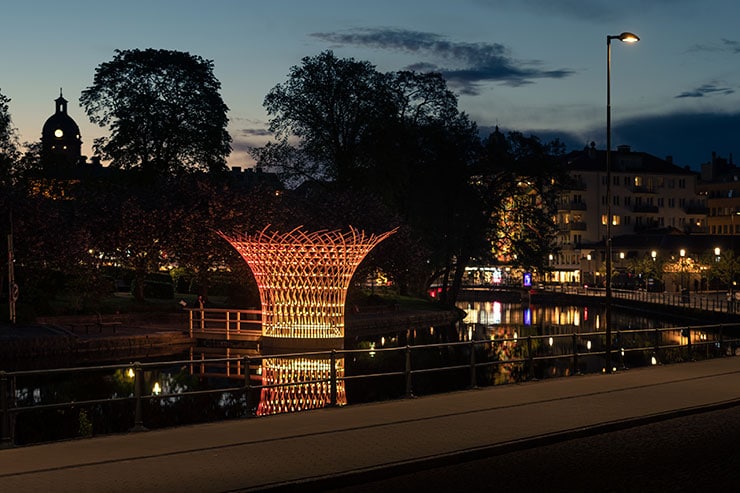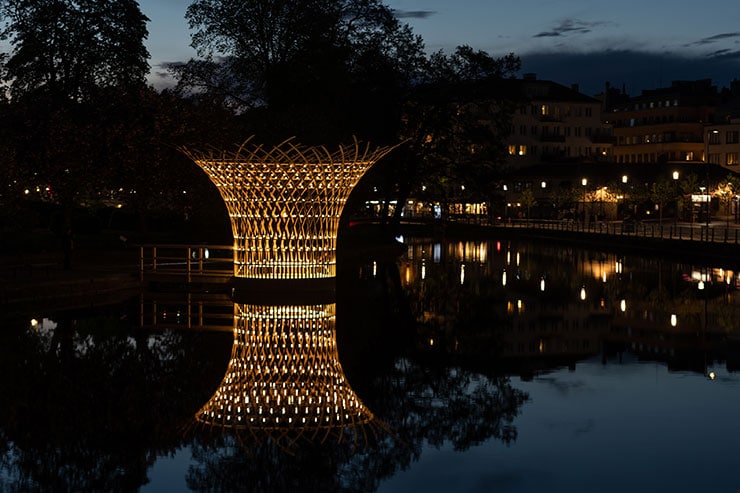- ABOUT
- JUDGING
- CONTACT
- MORE
- 2024 Entries
- Installations 2024
- Past Winners
- Subscribe
- [d]arc directory
- arc magazine
- darc magazine
Borås Pavilion, Sweden
ProjectBorås PavilionLocationBorås, SwedenLighting DesignOkidoki - Lighting studio, SwedenArchitectOkidoki Arkitekter, SwedenAdditional DesignControl Department SwedenClientBorås Art MuseumLighting SuppliersRebel light, Traxon, VexicaPhotographyLasse Olsson
2021 marks the 400th anniversary of the Swedish city of Borås. To commemorate this landmark occasion, while coinciding with the Borås Art Biennial, the Borås Art Museum launched a competition for a new pavilion to be constructed on the city’s river.
Designed in response to the theme of Borås Art Biennial “Deep Listening”, the pavilion is a “third space”, a hub aimed at encouraging social relations through access to culture. Floating in the water, the relationship between the city and the river is further strengthened.
The structure is a braided wooden megaphone facing the sky – a symbol of sound and communication. Inside, an open circular space has been designed so that all visitors can sit equally.
This floating meeting place is the braided heart of Borås, that pulsates rhythmically through sound waves and light. In fact, lighting adds another layer of communicating the values and purpose of the pavilion, while creating an engaging environment and vibrant atmosphere for visitors. Lighting not only helps enjoying the spectacle from the exterior, but also inviting people to walk on the water to reach the interior.
A sensor at the entrance of the pavilion triggers a special scenario that both signals the presence of people and creates a different environment; the dots pulse and change colours in vertical waves, simulating an electrocardiography.
Alongside this “heartbeat” triggered by visitors, three main scenes were created: an amber/white setting, with a very slow dynamic, enhancing the natural colours of the pavilion; two sets of very dynamic colour changing happening at half past the hour – one from orange to red to amber, mimicking waves in a bid to exaggerate the warmth of the wood, and another with purple tones and a more random movement; the final scene is the “Borås Lights” – only visible for 10 minutes in late evenings, this scene is aimed at engaging late night workers and younger members of the public with blue to green colours. Additionally, the event scenario includes an interpretation of festive lighting for winter holidays. The scenes are naturally influenced by daylight, with dimming settings varying and decreasing lightly after dark.
Light fixtures were integrated into the pavilion, creating a sharp reflection of the structure on the water. 320 RBGW individually controllable dots were used across the pavilion, accompanied by a flexible strip light underneath the bench, adding a lower scale, diffuse light.
Since completion, the pavilion has been positively received and well attended by the public: the pavilion has not only become an attraction of this edition of the Biennial, but also offered a living experience to meet or take the time to contemplate.







